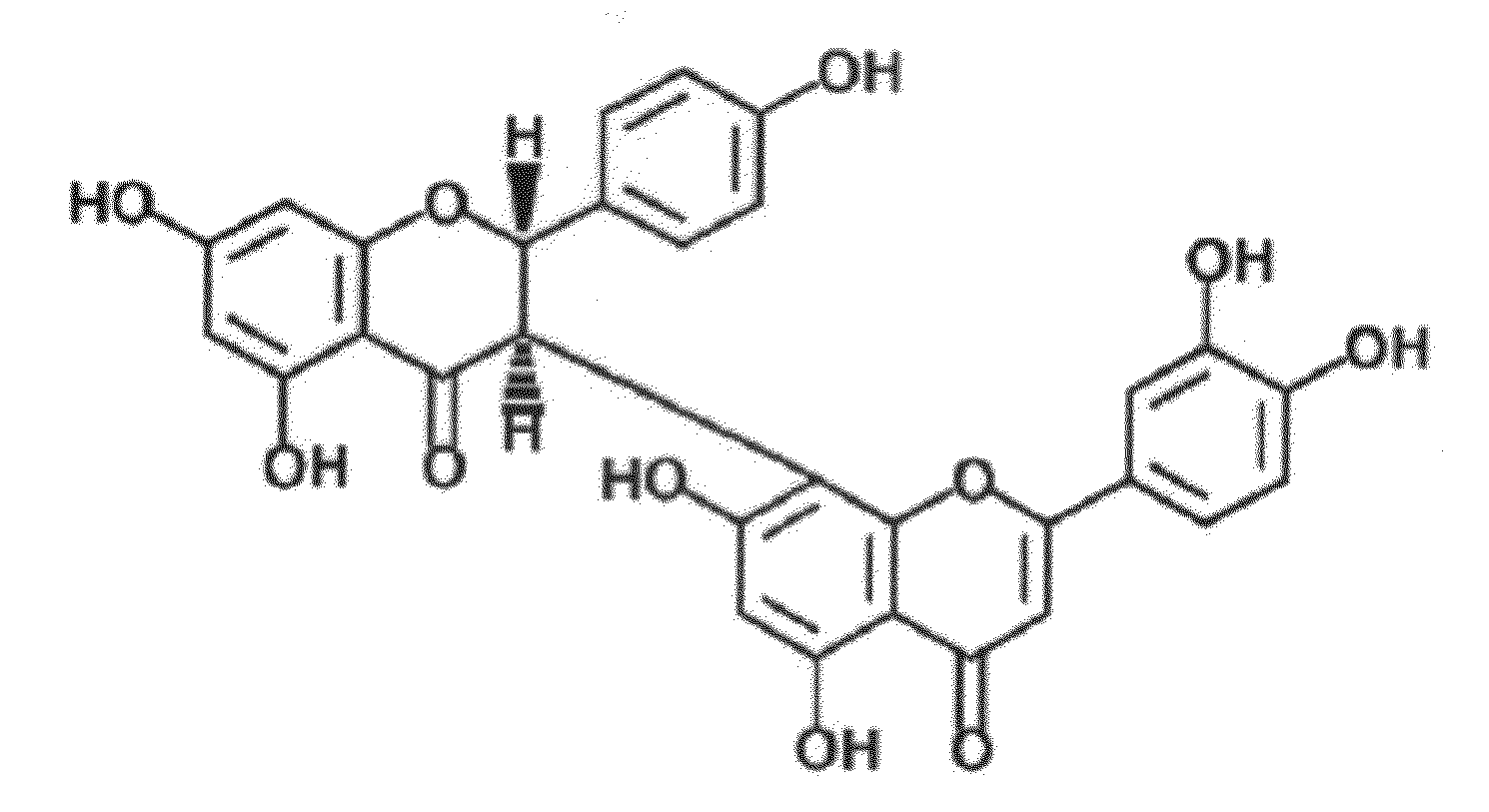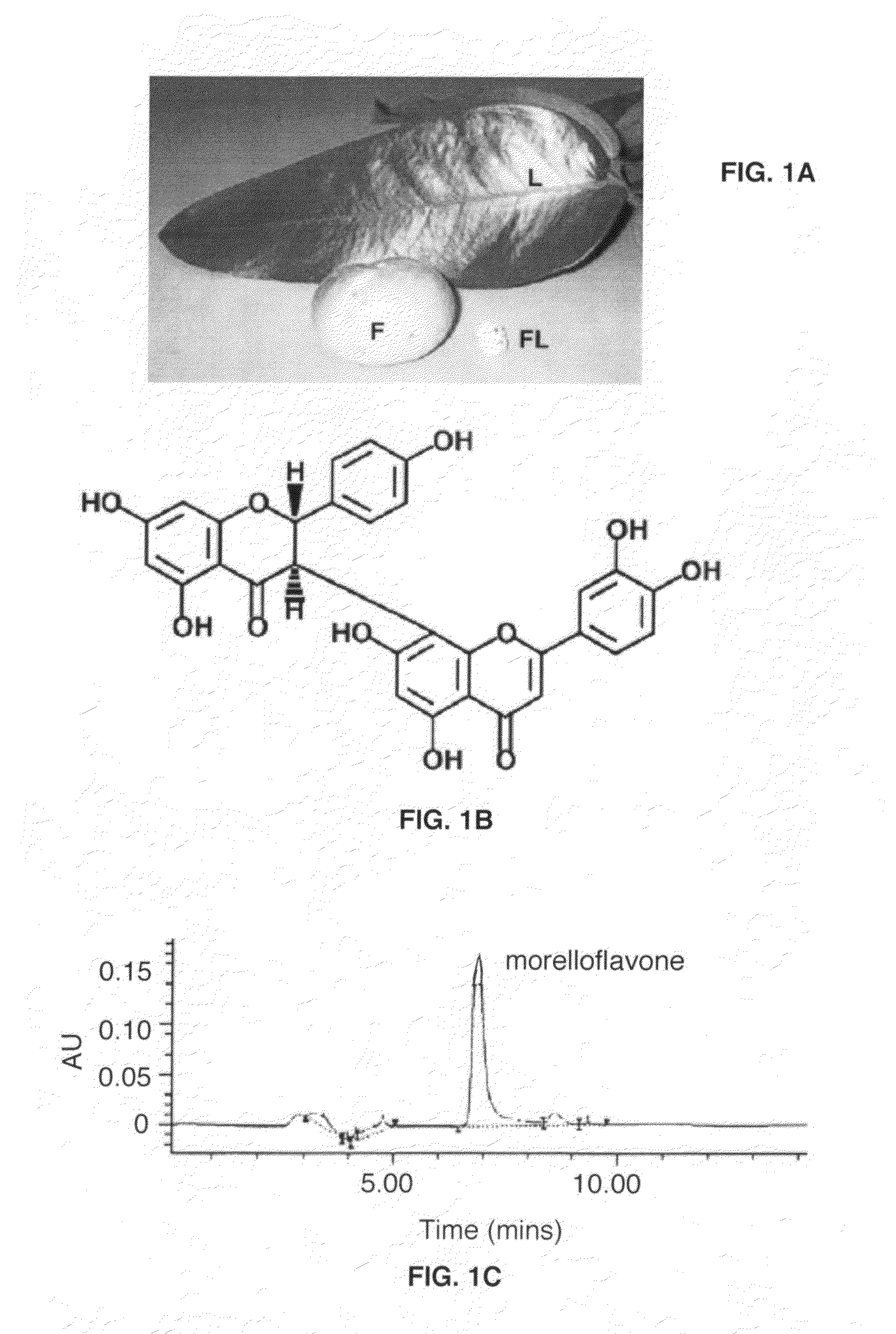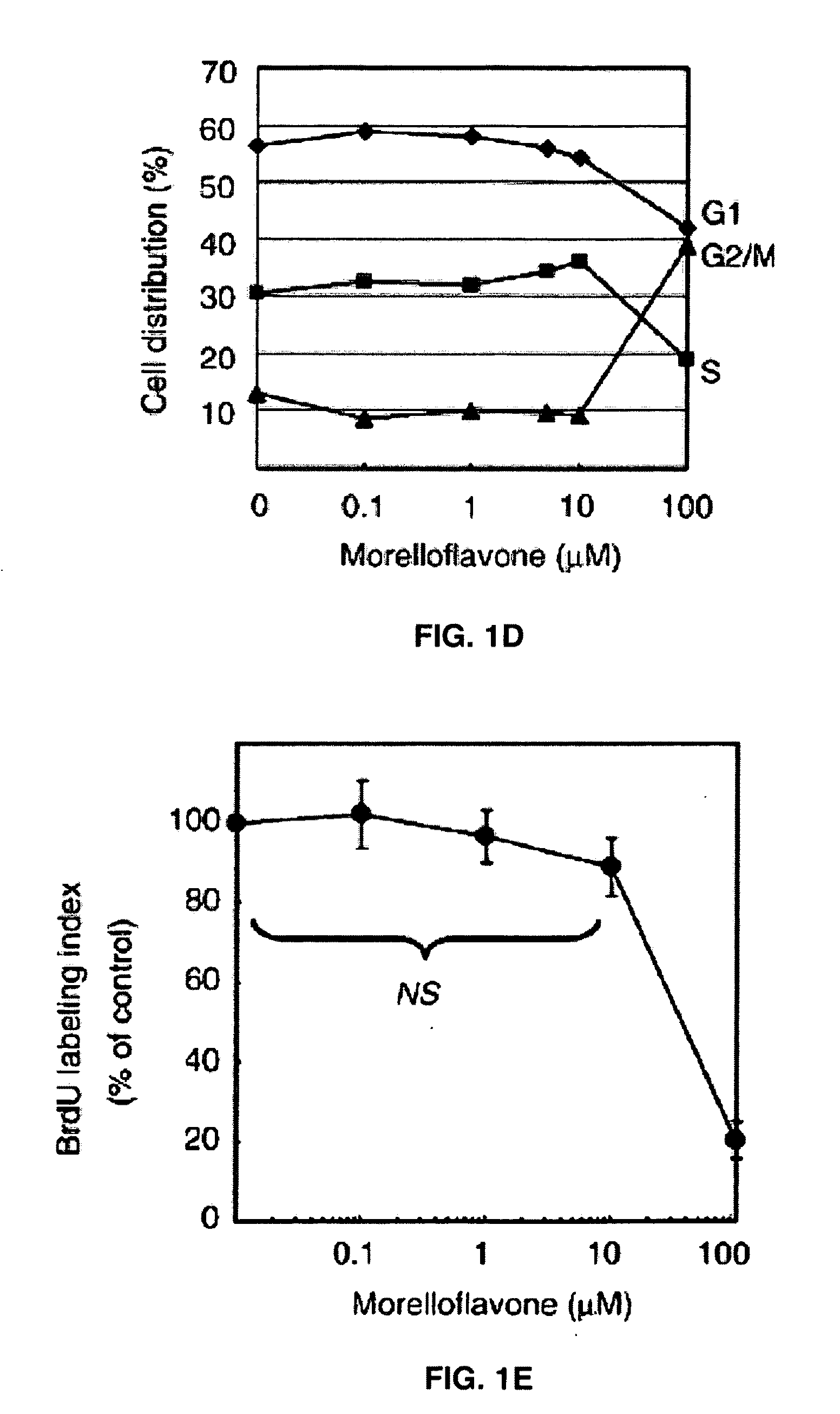Uses of morelloflavone
a technology of morelloflavone and stent, which is applied in the field of medicine and cell biology, can solve the problems of insufficient safety of drug-eluting stents without clopidogrel therapy, the inability of statins alone to eliminate atherosclerosis or complications of atherosclerosis, and the inability to fully establish the safety of drug-eluting stents, etc., to inhibit the migration of vascular smooth muscle cells, inhibit invasion, and increase lamellipodium index
- Summary
- Abstract
- Description
- Claims
- Application Information
AI Technical Summary
Problems solved by technology
Method used
Image
Examples
example 1
Preparation of Morelloflavone
[0038]The purification of morelloflavone was performed as described (1) with following modifications. Dried G. dulcis leaves were finely powdered and extracted with acetone. Insoluble matter was removed by filtration, and the filtrate was concentrated in vacuo. A second extraction was achieved with hexane, and the hexane-insoluble fraction was subsequently extracted with dichloromethane. The greenish-yellow residue from the dichloromethane-insoluble fraction was subjected to quick-column chromatography on silica 60H and eluted with dichloromethane-acetone in a polarity gradient manner.
[0039]The eluted fractions were combined on the basis of thin-layer chromatography (TLC) results. Finally, the purified compound was concentrated in vacuo, dried, and ground. TLC was used to confirm the desirable fraction for every step of extraction and purification. The purity of this compound was determined by using an HPLC system (Agilent 1100 Series, Germany), equipped...
example 2
Cell Culture
[0040]Mouse vascular smooth muscle cells, isolated as described (13), were maintained in 231 media (Cascade Biologics, Portland, Oreg.) supplemented with SMGS (Cascade Biologics) in a humidified incubator at 37° C. with 5% CO2. Cells from passages 4-9 were used in all experiments. All experiments were performed in subconfluent, unsynchronized cells growing in SMGS except for the lamellipodium formation assay.
example 3
Cell Cycle Analyses
[0041]Vascular smooth muscle cells (1×106) were seeded onto 10-cm dishes and treated with various concentrations of morelloflavone. After 24 hr incubation, the cells were fixed with 70% ethanol at 4° C. overnight, treated with RNAse in PBS, stained with propidium iodide (Sigma, St. Louis, Mo.), and subjected to flow cytometric DNA content analysis using Epics XL (Beckman-Coulter, Miami, Fla.). The percentages of cells in G1, S, and G2 / M phases were determined using Multi-cycle system software (Phoenix Flow System, San Diego, Calif.).
PUM
| Property | Measurement | Unit |
|---|---|---|
| flow rate | aaaaa | aaaaa |
| pore size | aaaaa | aaaaa |
| surface area | aaaaa | aaaaa |
Abstract
Description
Claims
Application Information
 Login to View More
Login to View More - R&D
- Intellectual Property
- Life Sciences
- Materials
- Tech Scout
- Unparalleled Data Quality
- Higher Quality Content
- 60% Fewer Hallucinations
Browse by: Latest US Patents, China's latest patents, Technical Efficacy Thesaurus, Application Domain, Technology Topic, Popular Technical Reports.
© 2025 PatSnap. All rights reserved.Legal|Privacy policy|Modern Slavery Act Transparency Statement|Sitemap|About US| Contact US: help@patsnap.com



